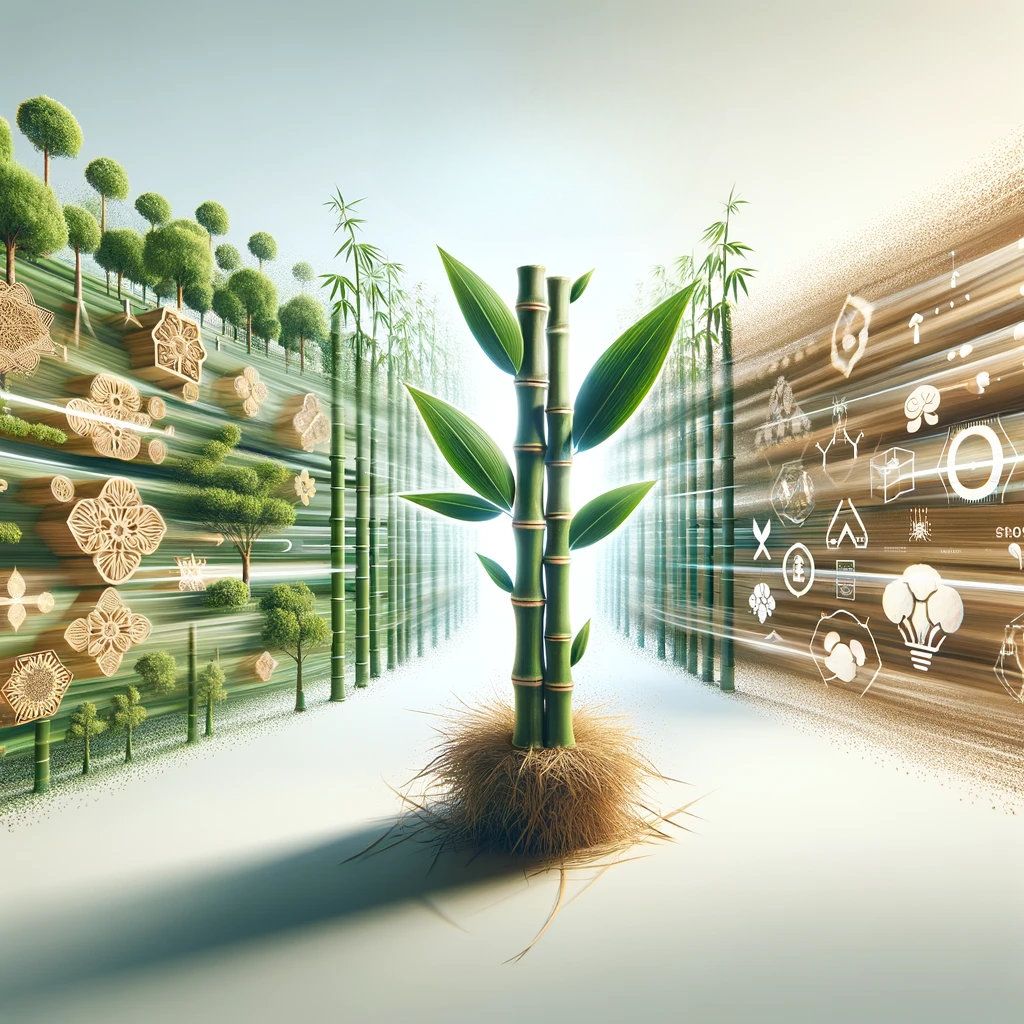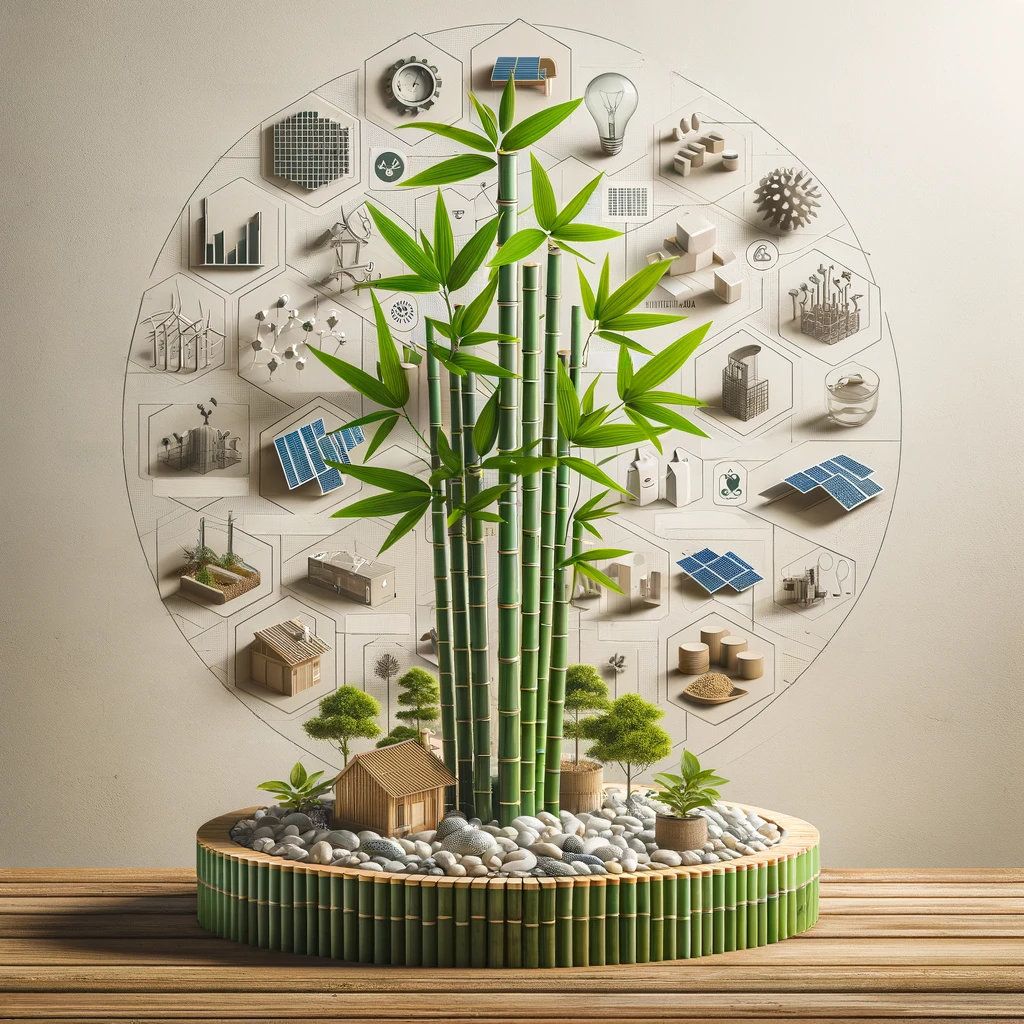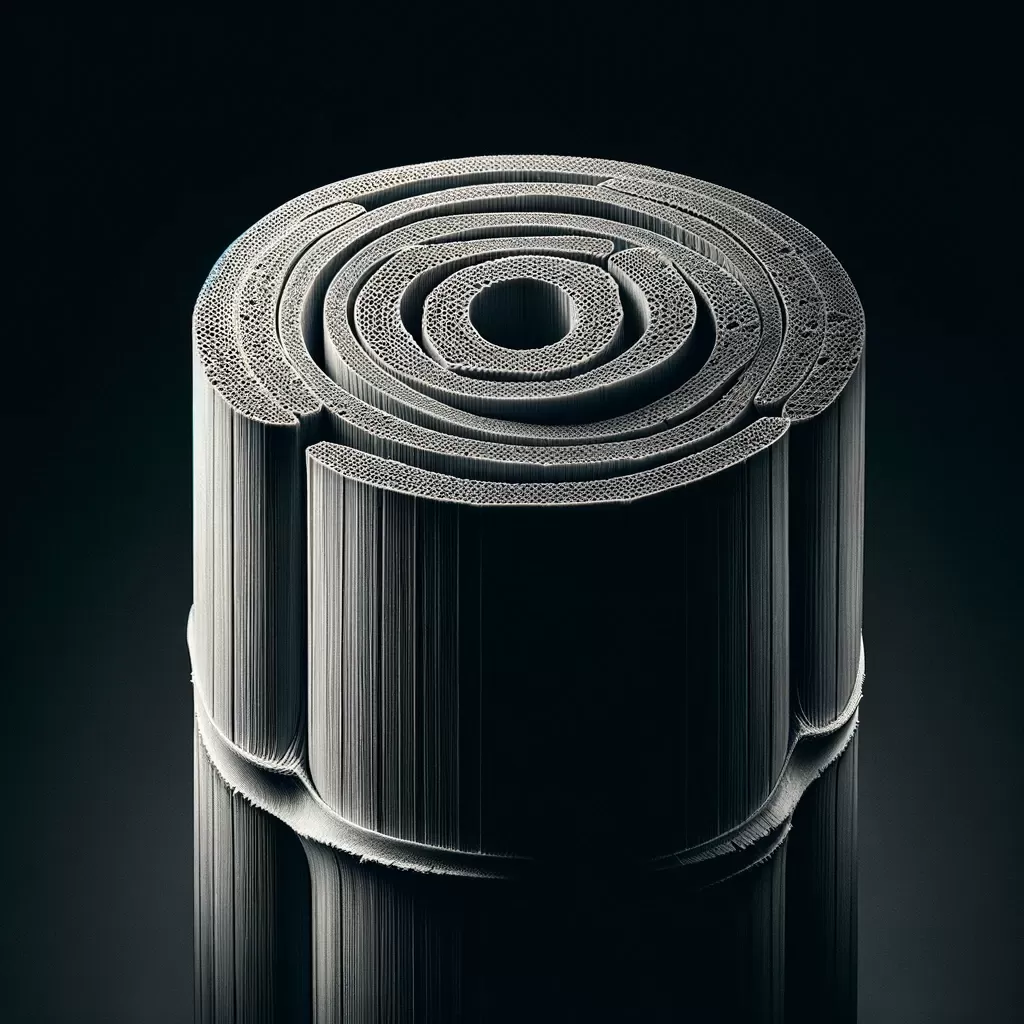Explore Bamboo's Superior Properties
Unveiling Bamboo
Discover the incredible strength, durability, and versatility of bamboo, the sustainable material that could revolutionize your next project or venture.
Bamboo: The Superhero of Sustainable Materials
Bamboo is an incredible plant with numerous benefits and applications. From construction to textiles, and from healthcare to acoustics, bamboo's unique properties make it an ideal material for sustainable living. With its fast growth rate, low water requirements, and ability to replenish itself quickly, bamboo is a renewable resource that can help mitigate climate change and promote environmental sustainability.
In this article, we will explore the various properties of bamboo that make it superior to other materials, and discuss how it can be used in innovative ways to address social and environmental challenges. Whether you're a designer, architect, or simply someone looking for sustainable alternatives, this article will provide valuable insights into the potential of bamboo as a versatile and eco-friendly material.
Strength and Durability
Bamboo is a highly versatile material that can withstand various environmental conditions, making it an ideal choice for building structures. Compared to traditional building materials like wood and steel, bamboo has several advantages. Bamboo has a high strength-to-weight ratio, which means that it can support heavy loads without sacrificing structural integrity. This is due to its unique cellular structure, which allows it to absorb shocks and stresses more effectively than other materials. Additionally, bamboo is resistant to decay and rot, making it a durable choice for outdoor construction.

Bamboo's strength-to-weight ratio is particularly impressive when compared to other building materials. For example, a single bamboo culm can support a load of up to 200 kg (440 lbs), while a steel beam with the same cross-sectional area would require 700 kg (1543 lbs) of weight to achieve the same structural integrity. This means that bamboo structures can be built with significantly less material, making them not only stronger but also more sustainable and environmentally friendly.
Bamboo's durability in various environmental conditions is another advantage of using this material for construction. It can withstand extreme temperatures, humidity, and even earthquakes without losing its structural integrity. This makes it an ideal choice for building structures in areas prone to natural disasters or harsh climates. Additionally, bamboo is resistant to pests and diseases, reducing the need for pesticides and other chemical treatments.
Overall, bamboo's strength and durability make it an ideal material for building structures that can withstand various environmental conditions. Its versatility and sustainability make it a valuable resource for architects and builders looking to create structures that are both strong and eco-friendly.
Sustainability and Eco-Friendliness
Bamboo is a highly sustainable crop that can replenish itself quickly, making it an ideal resource for various industries. Unlike traditional crops like timber or cotton, bamboo has a fast growth rate of around 3-5 feet per year, which means that it can be harvested in as little as three to five years after planting. This rapid growth rate allows bamboo to replenish itself quickly, reducing the need for deforestation and land clearing. Additionally, bamboo requires minimal water and fertilizer compared to other crops, making it a highly eco-friendly option.
Bamboo's low water requirements are particularly significant in areas where water is scarce. In regions with limited water resources, bamboo can be used as an alternative crop that requires significantly less water than traditional crops. This makes it an ideal resource for areas prone to drought or water scarcity. Similarly, bamboo's low fertilizer requirements reduce the need for chemical-based fertilizers, which can pollute soil and water sources.
Bamboo's role in reducing carbon footprint and mitigating climate change is another significant advantage of using this material. Bamboo is a highly efficient carbon sink, able to absorb up to 35% more carbon dioxide than trees. This means that bamboo can help reduce greenhouse gas emissions, slowing down the rate of global warming and mitigating its impact on the environment. Additionally, bamboo has a lower methane output compared to other crops like cattle or rice, making it an eco-friendly alternative for agriculture.

Overall, bamboo's fast growth rate, low water and fertilizer requirements, and ability to absorb carbon dioxide make it a highly sustainable and eco-friendly resource. Its versatility and durability also make it an ideal material for various industries, from construction to textiles and beyond. By exploring the possibilities of bamboo as a sustainable material, we can unlock its full potential to address social and environmental challenges while promoting eco-friendly living
Versatility and Flexibility
Bamboo's versatility and flexibility make it a highly valuable resource for various industries. This renewable material can be used to create a wide range of products, from furniture and textiles to building materials and beyond. For example, bamboo can be harvested and processed into flooring, walls, and roofing materials, providing an eco-friendly alternative to traditional building materials like wood or steel. Additionally, bamboo's versatility makes it a popular choice for creating furniture and decorative items, such as chairs, tables, and vases.
Bamboo's flexibility also allows it to be manipulated and processed in various ways to suit different needs and applications. For example, bamboo can be woven into fabric, creating a sustainable alternative to cotton or silk. It can also be used to create innovative products like bicycle frames, kayaks, and even musical instruments. This versatility makes bamboo an ideal resource for entrepreneurs and designers looking to create eco-friendly products that are both functional and stylish.
Moreover, bamboo's versatility and flexibility make it a highly adaptable material for various industries. For instance, bamboo can be used in the fashion industry to create sustainable clothing and accessories. It can also be used in the construction industry to build eco-friendly homes and buildings. Additionally, bamboo's versatility makes it an ideal material for creating innovative products like biodegradable packaging materials or eco-friendly cleaning products.
Overall, bamboo's versatility and flexibility make it a valuable resource for various industries and applications. Its ability to be processed and manipulated in various ways makes it an ideal material for creating eco-friendly products that are both functional and stylish. By exploring the possibilities of bamboo, we can unlock its full potential to address social and environmental challenges while promoting sustainable living
Special Properties and Applications
Bamboo has several unique properties that make it an exceptionally versatile material. One of its most notable properties is its ability to absorb sound and radiation, making it a valuable resource for acoustic applications. Bamboo can be used to create soundproofing materials, such as acoustic panels or insulation, which can help reduce noise pollution and improve the quality of life in urban areas. Additionally, bamboo's antimicrobial and anti-inflammatory qualities make it an ideal material for healthcare applications, such as creating medical devices or hospital furniture that are both hygienic and comfortable.
Bamboo's ability to absorb sound and radiation is due to its unique cellular structure, which allows it to resonate at specific frequencies. This property makes bamboo an effective material for soundproofing, as it can absorb and dissipate sound waves more efficiently than other materials. For example, bamboo acoustic panels have been used in recording studios and home theaters to improve sound quality and reduce noise pollution. Similarly, bamboo insulation has been used in buildings to reduce heat transfer and improve energy efficiency.
Bamboo's antimicrobial and anti-inflammatory properties make it an ideal material for healthcare applications. Bamboo contains a natural compound called "bamboo kun," which has antibacterial and anti-inflammatory properties. This makes bamboo an effective material for creating medical devices, such as hospital furniture or medical equipment, that are both hygienic and comfortable. For example, bamboo hospital beds have been used in some hospitals to provide a more comfortable and hygienic patient experience. Additionally, bamboo has been used in traditional medicine for centuries due to its antimicrobial properties, which can help prevent the spread of diseases and infections.

Overall, bamboo's unique properties make it an exceptionally versatile material with a wide range of applications. From acoustic panels to medical devices, bamboo has the potential to address social and environmental challenges while promoting sustainable living.
Conclusion
In conclusion, bamboo is an exceptionally versatile and sustainable material that has the potential to make a significant impact in various industries and applications. With its superior properties, such as high strength-to-weight ratio, fast growth rate, and antimicrobial properties, bamboo can provide innovative solutions to social and environmental challenges. From construction to textiles, healthcare to acoustics, the possibilities of using bamboo as a sustainable material are endless.
As we continue to face environmental challenges and strive for sustainable living, it is essential to explore the potential of bamboo as a valuable resource. By investing in bamboo-based products and technologies, we can reduce our reliance on non-renewable resources, decrease waste and pollution, and promote eco-friendly living.
In your next project or venture, consider exploring the possibilities of using bamboo as a sustainable material. With its versatility, durability, and eco-friendliness, bamboo has the potential to make a significant impact in various industries and applications. By working together to promote sustainable living and innovative technologies, we can create a better future for ourselves and future generations.
So what are you waiting for? Explore the possibilities of using bamboo as a sustainable material today!